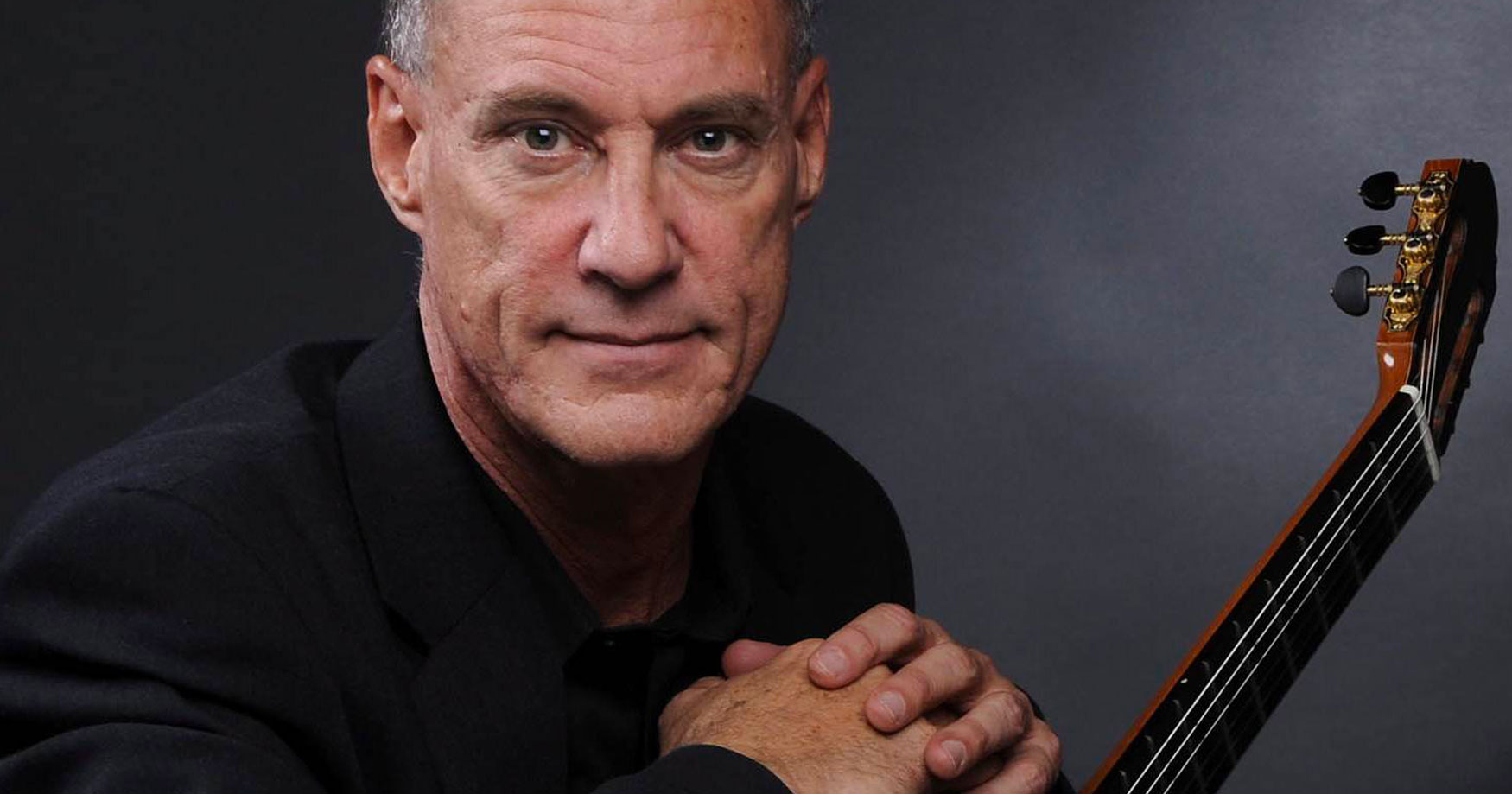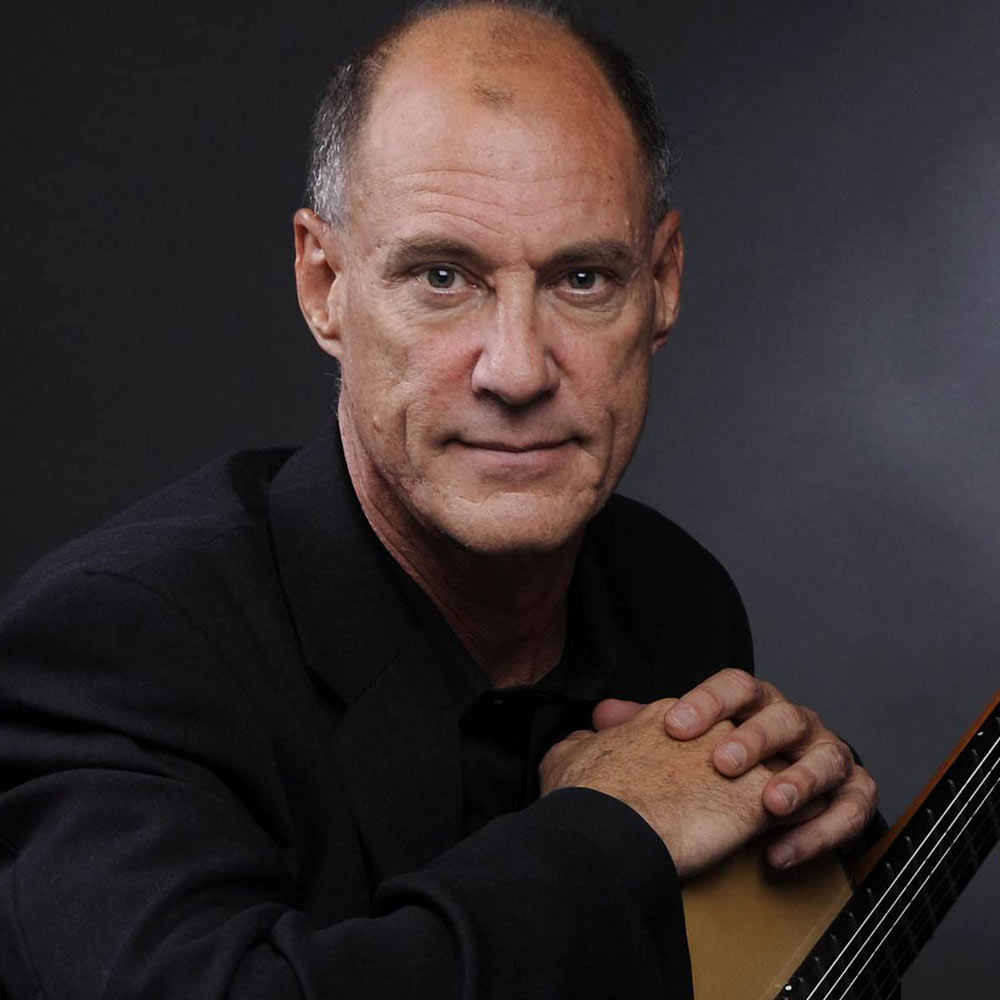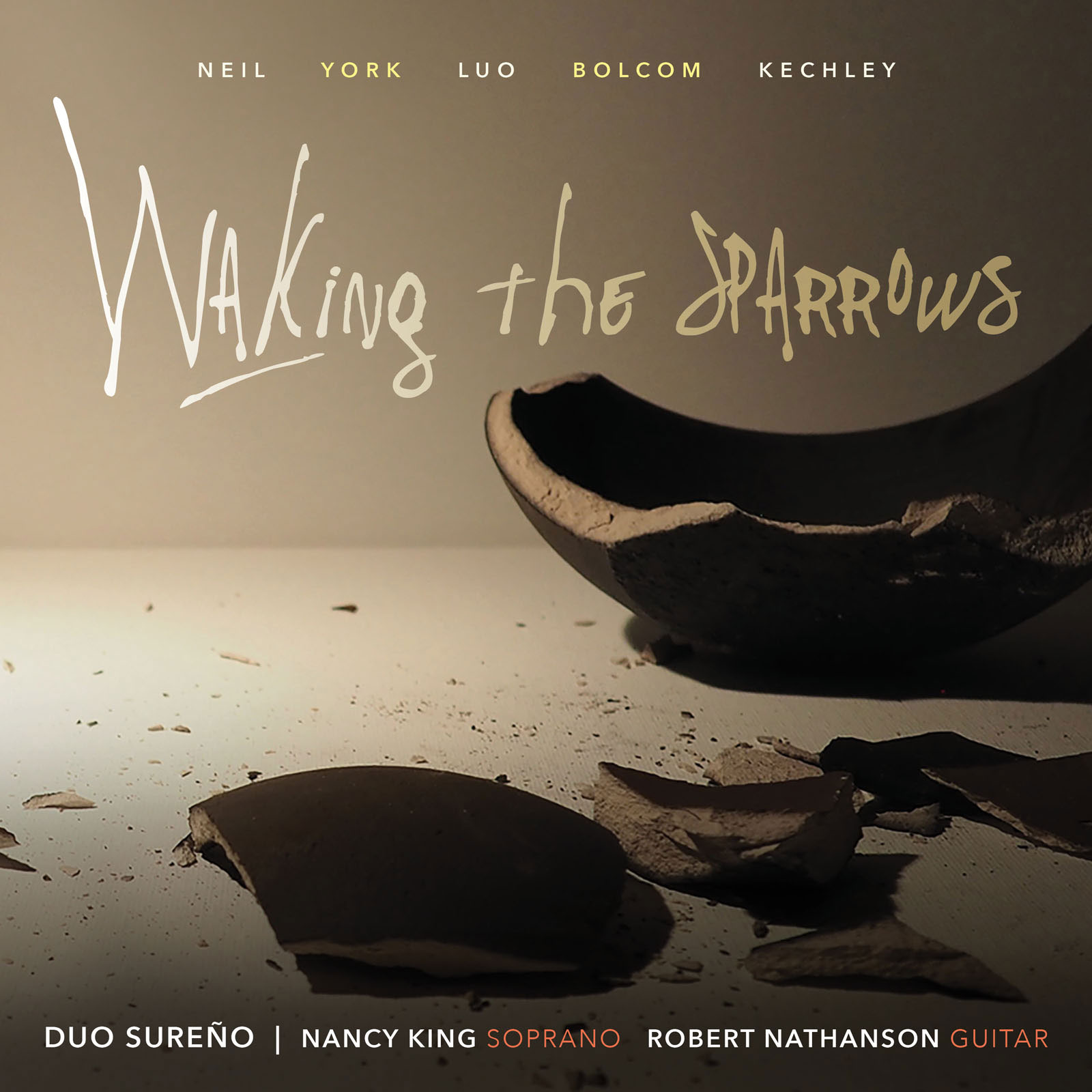
Meet Rob Nathanson, an acclaimed classical and baroque guitarist who has performed across the United States as well as in Italy, Germany, Spain, the United Kingdom, and more. His latest album, WAKING THE SPARROWS, features Rob with soprano Nancy King as part of their group Duo Sureño, which they began together in 1999. A champion of new music, he has commissioned, premiered, and recorded works by numerous contemporary composers. He has also hosted several New Music Festivals, inviting composers and performers to the campus of University of North Carolina Wilmington, where he is Professor of Music, to perform, record, and conduct master classes.
Today, Rob is our featured artist in “The Inside Story,” a blog series exploring the inner workings and personalities of our artists. Read on to hear about Rob’s most nerve-wracking performance experience…
Who was your first favorite artist(s) growing up?
It was the early 1960s and I was nine when I cut my teeth on Peter Paul and Mary, the Kingston Trio, and the New Christy Minstrels. By the time I was 12, my favorite was Bob Dylan. I was doing campfire sing-alongs with a harmonica strapped around my neck. As I became a teenager, I was trying to copy anybody that could play acoustic guitar well – Paul Simon, James Taylor, Leo Kottke, Stephen Stills, and so forth. So for the most part I loved the guitar playing. The harder it was, the more fun it was. By a strange set of circumstances I was accepted into a graduate program for architecture at the University of Utah, but I still had to get a bachelor’s degree in something/anything. The University offered a degree in classical guitar. I auditioned, was accepted, and as they say, the rest is history.
When did you realize that you wanted to be an artist?
Before I was accepted into that architecture program, I was an engineering major at University of Michigan. I was invited by some friends to visit the studio of a student who was given carte-blanche (by the University on some kind of scholarship) just to make his sculptural art (no classes!). I was fascinated with the concept of just creating art all day long, not to mention modern, avant-garde, wonderfully fanciful art. That’s when I really began to picture myself in a similar role.
What was your most unusual performance, or the most embarrassing thing that happened to you during a performance?
It was 2003, I was in Minneapolis at the World Saxophone Congress to premiere “A Double Concerto for Saxophone and Guitar” by David Kechley, “Sea of Stones.” Because of budgetary problems we only had one rehearsal plus a dress rehearsal. The dress rehearsal was two hours before the actual performance. We started the dress rehearsal and after three tries we could not get through the first page. The conductor looks at the saxophonist and me and says, “we’re going to do this one more time and go through to the end of the piece whether you guys hit any notes or not”. Well 25 minutes later I don’t think I hit any notes, I was so shaken up! I walked off that stage drenched in sweat and terrified that I was going to have to walk back onstage in an hour and a half. I went to a practice room, took off my soaking wet suit, played through the piece slowly with a metronome, and miraculously walked back out onstage and had a respectable performance. Talk about feeling like “Dead Man Walking” when I went back on that stage!
What was your favorite musical moment on the album?
There are several musical moments that are my favorite but they are all on track one. Out of Darkness into Light is one of the most emotional pieces I have ever performed. It is a 25 minute epic, going through different journeys and feelings, taking the listener into a story of a woman, her art, and her pregnancy and birthing. Somewhere in the middle of the piece Nancy sings the word “death.” You can’t miss it. If that doesn’t make your hair stand up, nothing will.
What does this album mean to you personally?
As it says inside the front cover of the CD, this is really the culmination of a 20-year project. Our goal has always been the commissioning, performing, and recording of new music. We started to make this record in 2003 when we had enough new material to do a recording. However, life postponed things for a while (12 years). It turned out to be a good thing insofar as we have commissioned a lot of great music since then. The Neil, York, and Kechley pieces were all written recently. For me personally, I have now produced/released music with all my ensemble partners. So this record is kind of one thing off my musical bucket list, a very important thing for me.
Is there a specific feeling that you would like communicated to audiences in this work?
At first we had some trouble with finding a label that would release this music. It seems in the new music world that there is a prejudice against voice and “art-song” and that it is different than other new ensemble music. So it was great to find PARMA Recordings because they were so over-the-top enthusiastic about this project. But if you listen to this record you can see that all these composers incorporate the voice as part of the ensemble. These pieces are certainly not traditional “songs” being simply voice with accompaniment. The voice in these pieces are an integral part of the piece, woven into the larger musical structures and are anything but “songs.”

Robert Nathanson, classical and baroque guitarist, is an active recitalist and orchestral soloist, now focusing on chamber music, with concerts throughout the United States, as well as performances in Germany, Italy, the United Kingdom, Spain, Austria, Slovenia, and Canada. He has been performing as part of the Ryoanji Duo (guitar and saxophone) and the North Carolina Guitar Quartet since 1992 and as part of Duo Sureño (guitar and soprano) since 1999.

